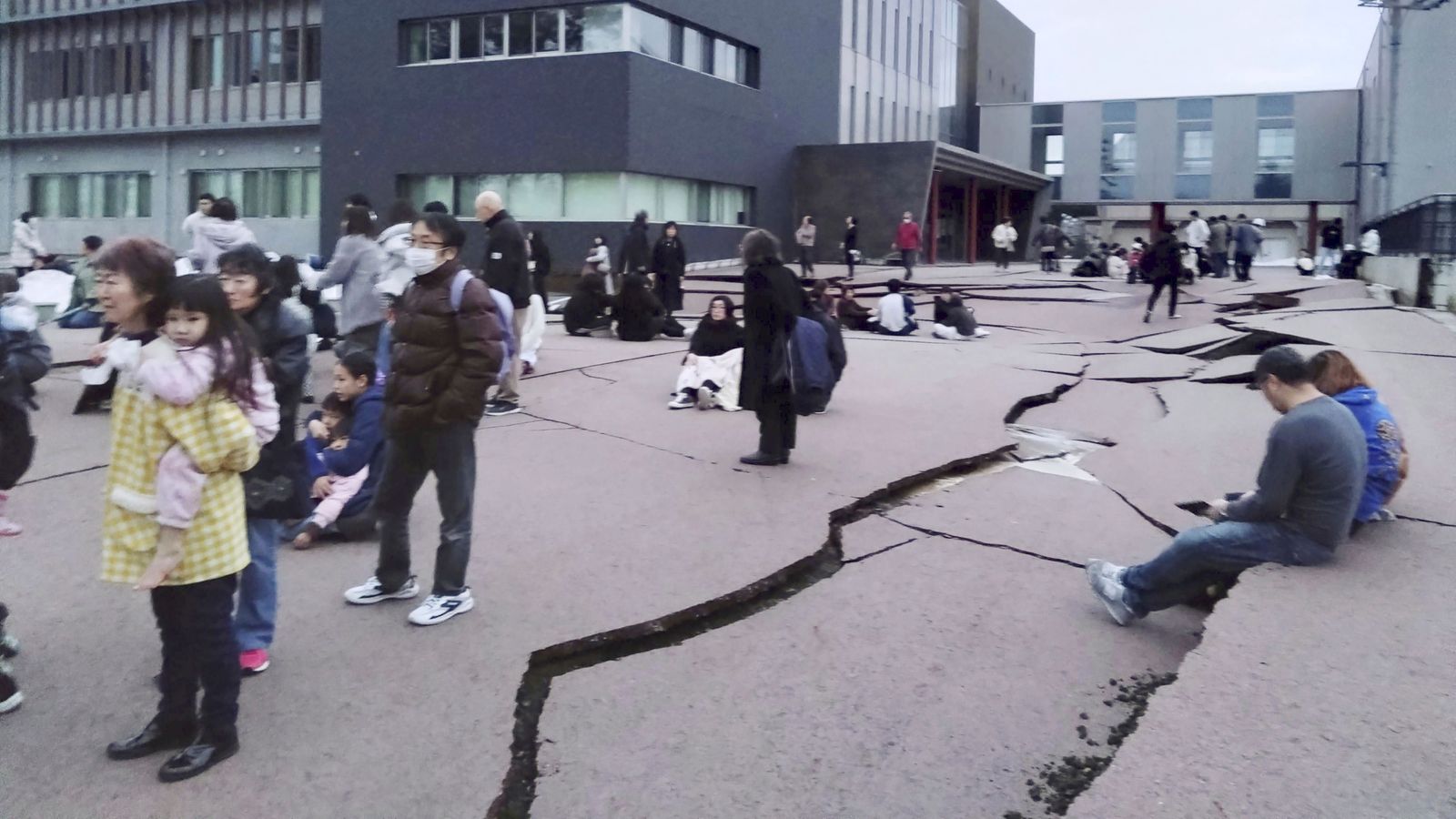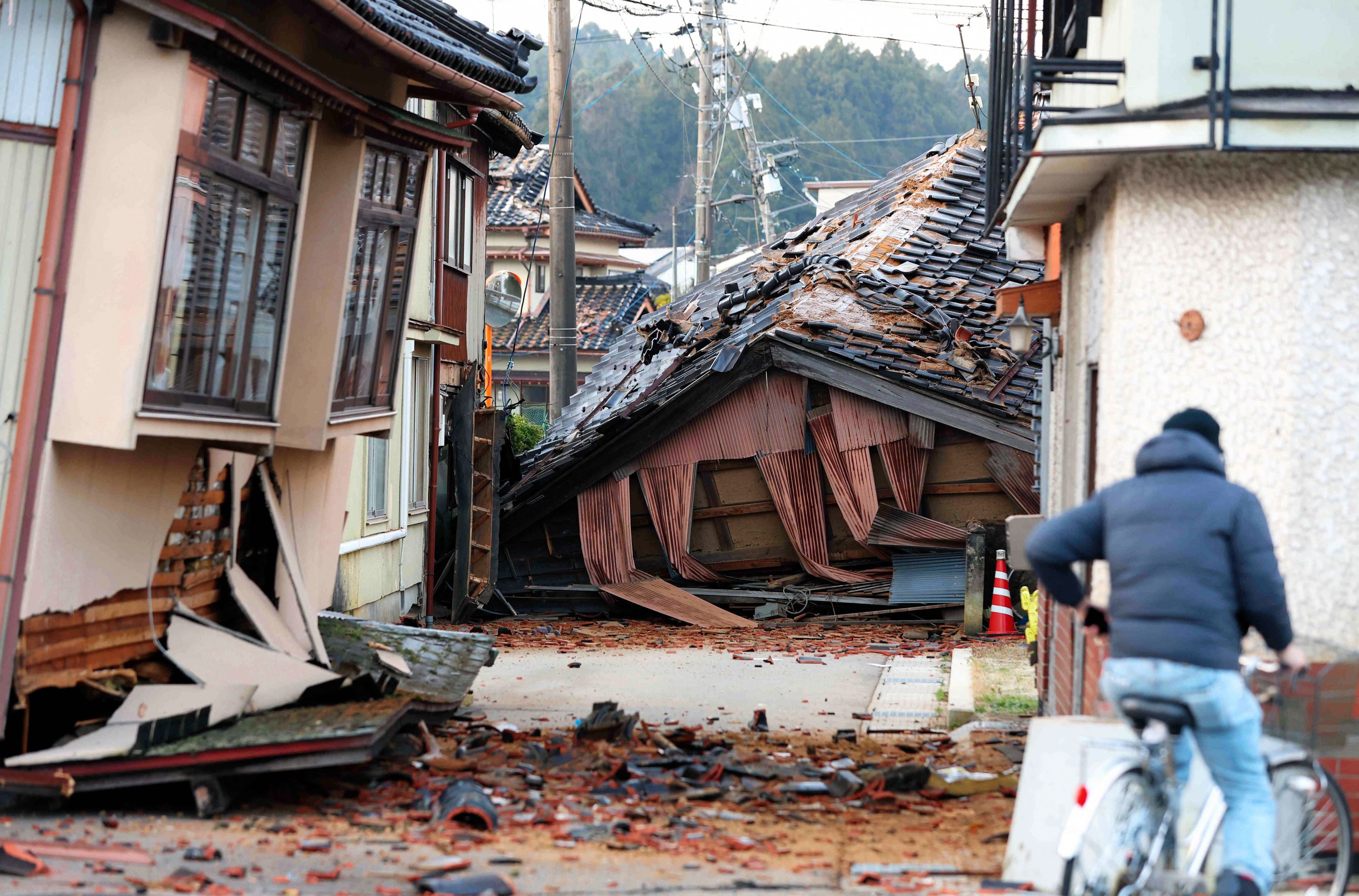Understanding Japan’s Earthquake and Tsunami Risk

Japan’s location on the Pacific Ring of Fire, a zone of intense seismic activity, makes it highly susceptible to earthquakes and tsunamis. These natural disasters have shaped the country’s history and continue to pose significant risks to its population and infrastructure.
Geological Factors Contributing to Japan’s Vulnerability
Japan’s vulnerability to earthquakes and tsunamis is rooted in its unique geological setting. The country sits on the boundary of four tectonic plates: the Eurasian Plate, the North American Plate, the Pacific Plate, and the Philippine Sea Plate. These plates are constantly moving, colliding, and grinding against each other, creating immense pressure that is released in the form of earthquakes.
The Pacific Plate, in particular, is subducting beneath the Eurasian Plate, creating a deep trench along the Japanese coastline. This subduction zone is a major source of earthquakes and tsunamis. The movement of these plates also generates a series of faults and volcanic zones throughout Japan, further contributing to its seismic activity.
Historical Earthquakes and Tsunamis in Japan
Japan has a long and tragic history of earthquakes and tsunamis. Some of the most significant events include:
- The 1703 Genroku Earthquake, which had a magnitude of 8.2 and triggered a devastating tsunami that killed tens of thousands of people.
- The 1923 Great Kantō Earthquake, with a magnitude of 7.9, destroyed much of Tokyo and Yokohama, claiming over 100,000 lives.
- The 2011 Tōhoku Earthquake and Tsunami, with a magnitude of 9.0, was one of the most powerful earthquakes ever recorded. The resulting tsunami caused widespread devastation, including the Fukushima Daiichi nuclear disaster.
These events have highlighted the importance of disaster preparedness and mitigation measures in Japan.
The Pacific Ring of Fire and Its Relevance to Japan
The Pacific Ring of Fire is a horseshoe-shaped zone of intense seismic and volcanic activity that encircles the Pacific Ocean. It is characterized by a series of subduction zones, where tectonic plates collide and one slides beneath the other.
Japan lies within the Pacific Ring of Fire, making it highly vulnerable to earthquakes and tsunamis. The subduction zones along the Japanese coastline are responsible for the majority of the country’s seismic activity. The Pacific Ring of Fire is home to approximately 90% of the world’s earthquakes and 75% of the world’s volcanoes, highlighting its significance in shaping the Earth’s geology.
Types of Earthquakes in Japan and Their Associated Risks
Japan experiences various types of earthquakes, each with its own characteristics and risks:
- Tectonic Earthquakes: These are the most common type of earthquake in Japan, caused by the movement of tectonic plates. They can be very powerful and destructive, and are often associated with tsunamis.
- Volcanic Earthquakes: These earthquakes are caused by the movement of magma beneath the Earth’s surface. They are typically smaller than tectonic earthquakes, but can still cause significant damage.
- Induced Earthquakes: These earthquakes are caused by human activities, such as the injection of wastewater or the extraction of natural gas. While less frequent, they can still pose risks, especially in areas with high levels of seismic activity.
Understanding the different types of earthquakes and their associated risks is crucial for developing effective earthquake preparedness and mitigation strategies.
Preparing for and Responding to Earthquakes and Tsunamis: Japan Earthquake Tsunami Warning

Japan’s location on the Pacific Ring of Fire makes it highly susceptible to earthquakes and tsunamis. These natural disasters can cause significant damage and loss of life. It is essential for individuals and communities to be prepared for these events.
Preparing for Earthquakes and Tsunamis
Being prepared for earthquakes and tsunamis in Japan involves proactive steps to ensure safety and minimize potential risks. Here are some practical measures individuals can take:
- Secure Your Home: Secure heavy objects, such as bookcases and mirrors, to prevent them from falling during an earthquake. Store breakable items in lower cabinets or shelves. Keep a fire extinguisher and first-aid kit readily accessible.
- Create an Emergency Kit: Prepare an emergency kit that includes essential items such as water, non-perishable food, a flashlight, batteries, a first-aid kit, a whistle, and a radio. Keep a copy of important documents, such as insurance policies and medical records, in a waterproof container.
- Identify Safe Zones: Identify safe zones within your home, such as under sturdy furniture or in doorways. Know the location of your nearest evacuation center and the evacuation route to reach it.
- Practice Emergency Procedures: Practice earthquake and tsunami drills with your family or roommates. This will help you respond quickly and effectively in the event of an emergency.
- Stay Informed: Stay informed about earthquake and tsunami warnings by subscribing to alerts from local authorities and news organizations. Be aware of the different types of warnings and what they mean.
Evacuation Procedures for Tsunami Warnings, Japan earthquake tsunami warning
Evacuation procedures for tsunamis in Japan are designed to minimize casualties and ensure the safety of residents. The type of warning issued determines the appropriate response:
- Tsunami Advisory: A tsunami advisory indicates a possibility of a tsunami, but it is not confirmed. Authorities recommend monitoring the situation and being prepared to evacuate if necessary.
- Tsunami Watch: A tsunami watch indicates a potential for a tsunami, and residents should be prepared to evacuate if a warning is issued.
- Tsunami Warning: A tsunami warning indicates a tsunami is imminent, and immediate evacuation to higher ground is necessary.
Role of Local Governments and Emergency Services
Local governments and emergency services play a crucial role in disaster preparedness and response. They are responsible for:
- Developing and Implementing Emergency Plans: Local governments develop comprehensive emergency plans that Artikel procedures for responding to earthquakes and tsunamis. These plans include evacuation routes, communication protocols, and resource allocation.
- Providing Public Education and Awareness: Local governments and emergency services conduct public education campaigns to inform residents about earthquake and tsunami risks and safety measures. They also distribute emergency preparedness kits and conduct drills to enhance community preparedness.
- Coordinating Response Efforts: During an earthquake or tsunami, local governments and emergency services coordinate response efforts, including search and rescue, medical assistance, and shelter provision.
- Maintaining Infrastructure: Local governments are responsible for maintaining infrastructure, such as roads, bridges, and communication systems, to ensure efficient response and recovery efforts.
Community-Based Initiatives and Public Awareness Campaigns
Community-based initiatives and public awareness campaigns play a vital role in promoting earthquake and tsunami safety. These initiatives include:
- Neighborhood Watch Programs: Neighborhood watch programs encourage residents to look out for each other and report any suspicious activity or potential hazards. They also help disseminate information about emergency procedures and resources.
- Community Drills: Community drills provide residents with an opportunity to practice evacuation procedures and familiarize themselves with emergency response protocols. They also foster a sense of community preparedness and resilience.
- Public Awareness Campaigns: Public awareness campaigns use various media channels, such as television, radio, and social media, to educate residents about earthquake and tsunami risks, safety measures, and emergency resources.
- School Programs: Schools play a crucial role in educating children about earthquake and tsunami safety. They conduct drills, teach students about emergency procedures, and promote a culture of preparedness.
Japan earthquake tsunami warning – Yo, so like, Japan just had a huge earthquake and tsunami warning, which is totally scary, right? But hey, at least we got the sport climbing combined olympics usa to look forward to, which is gonna be totally epic! I mean, can you imagine the adrenaline rush?
Anyways, back to the earthquake, hope everyone in Japan is safe.
Yo, so like, Japan got hit with a crazy earthquake and tsunami warning, right? It’s totally wild how nature can be so unpredictable. Reminds me of that time I saw a video of a skydiving accident caused by a dust devil.
It was like a mini-tornado outta nowhere, and it totally freaked me out! Anyway, back to Japan, hope everyone there is safe and sound.